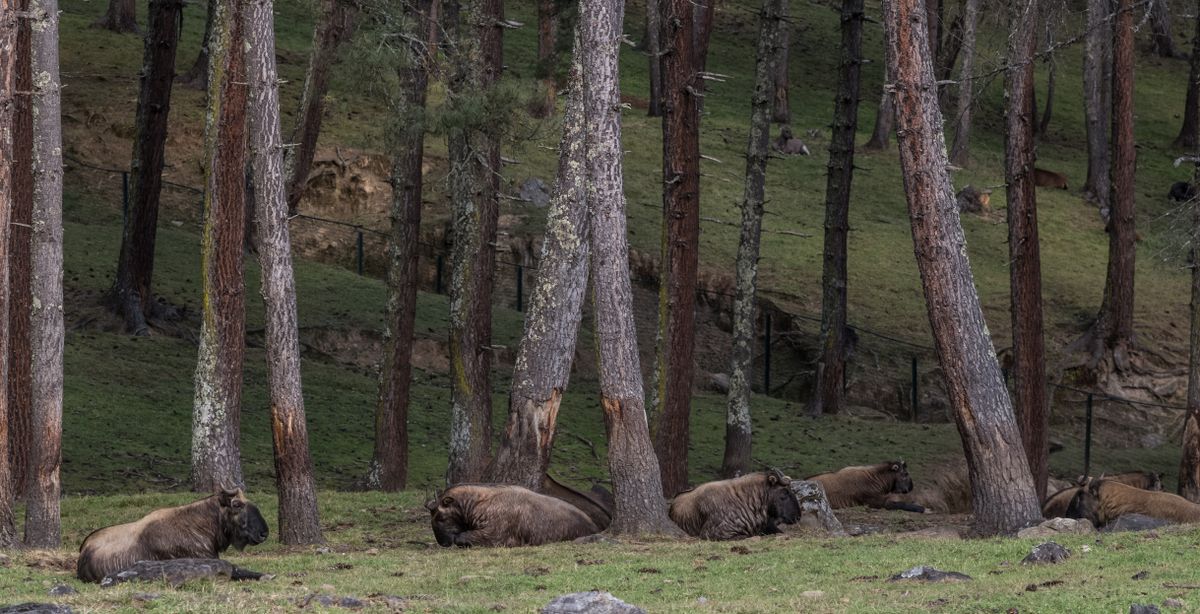About
Strange muskox-looking creatures roam within the trees in Bhutan’s capital city. The hoofed beasts, which look like a mishmash of cows and goats, are held in extremely high esteem.
The takin is a rare type of goat-antelope living in the Eastern Himalayas. The four subspecies of the takin live in high altitudes throughout Bhutan, Northeast India, Northwest Myanmar, and the Chinese section of the Himalaya.
The odd-looking animals are the national animal of Bhutan. According to local legend, a 15th-century saint concocted the curious creature after he agreed to conjure up a miracle in exchange for lunch. He then slapped the head of a goat atop a cow’s skeleton and brought this new animal to life.
In reality, the takin is the result of convergent evolution. The animals’ protracted noses, large heads, and sturdy torsos give them a distinctive look. Taxonomists, biologists, and zoologists are all keen to study the creature because though it resembles a muskox, it’s actually more genetically similar to sheep.
The takin found at the Motithang Takin Preserve were once part of a small zoo. But when the King of Bhutan declared it was improper for Buddhist country to keep animals in such confinement, the big beasts were set free. Yet they didn’t wander far.
The freed takin, which at this point were used to humans, preferred to converge within Thimphu. The Motithang Takin Preserve was created to provide shelter to the capital city’s four-legged residents. Now, the takin live within 8.4 acres of carefully managed forest. The Bhutanese authorities are particularly attentive to the health and wellbeing of the takin due to its status as the national animal.
Other takin roam in the Dihang-Dibang Biosphere Reserve in India. Surprisingly, you can also spot an actively breeding herd in Cumberland, Ohio, which was planted there as part of a Species Survival Plan.
Related Tags
Festivals & Temples of Bhutan
Festivals, astrology, and epic landscapes in Bhutan.
Book NowCommunity Contributors
Added By
Published
January 29, 2018



























